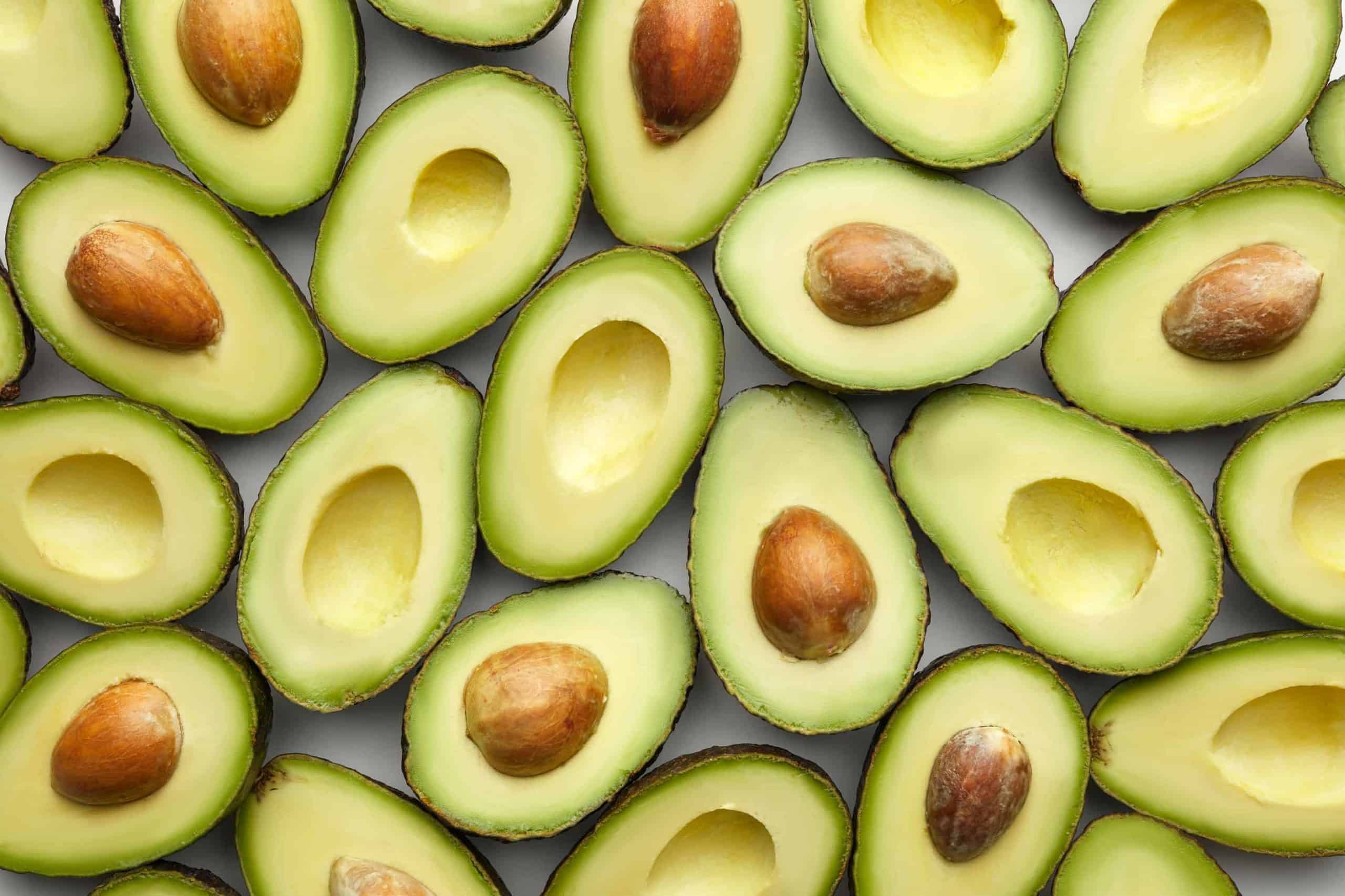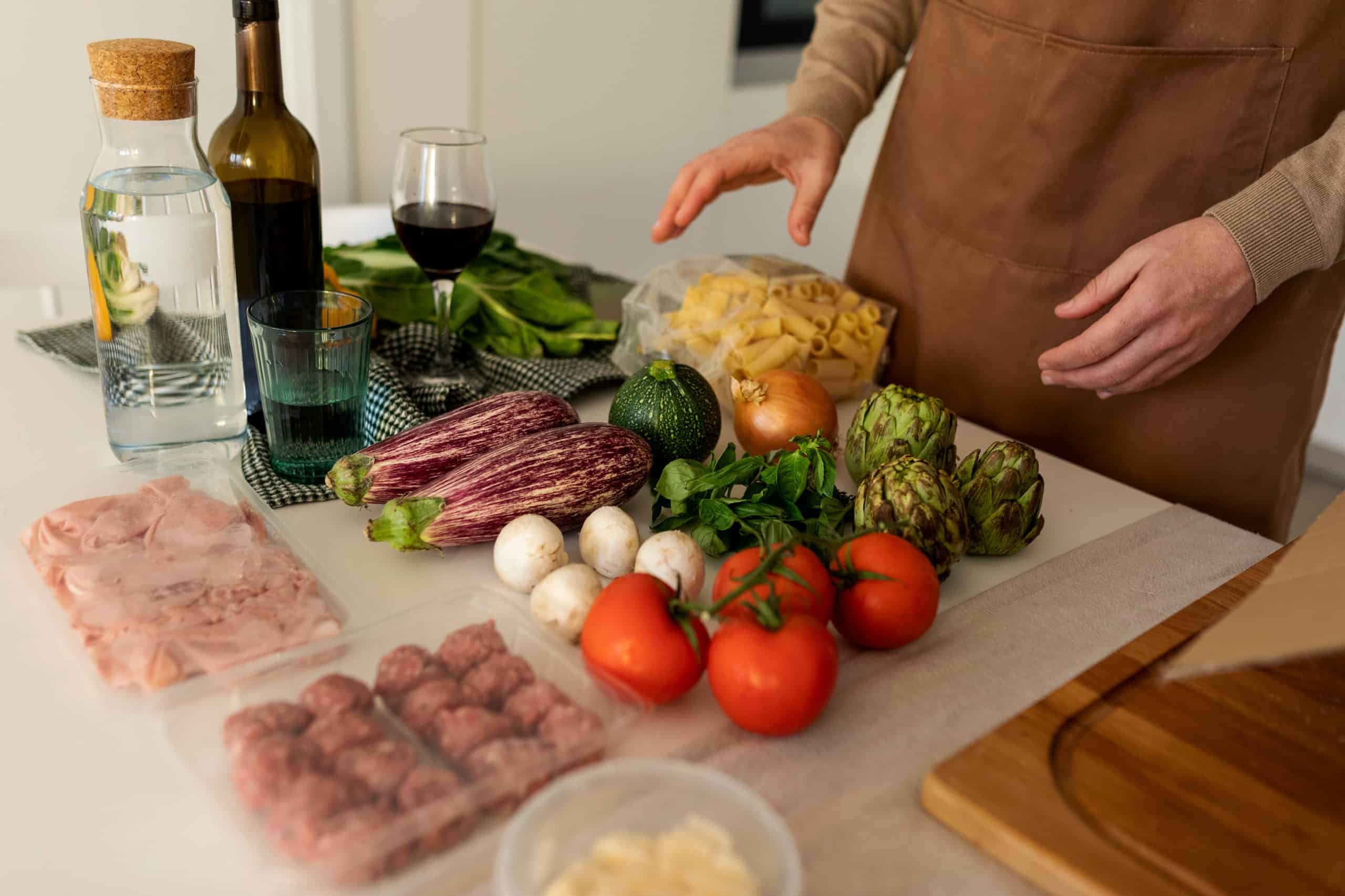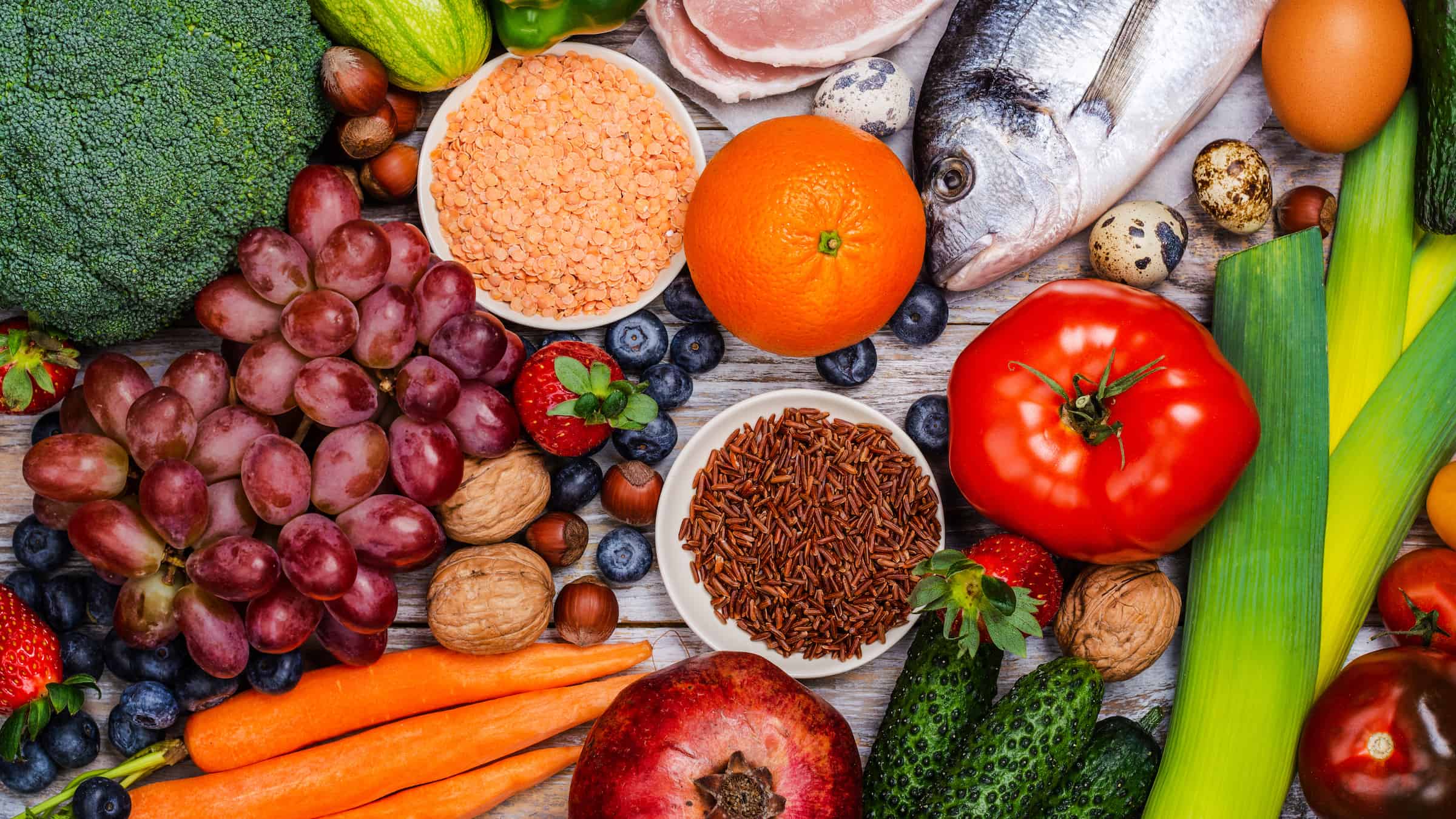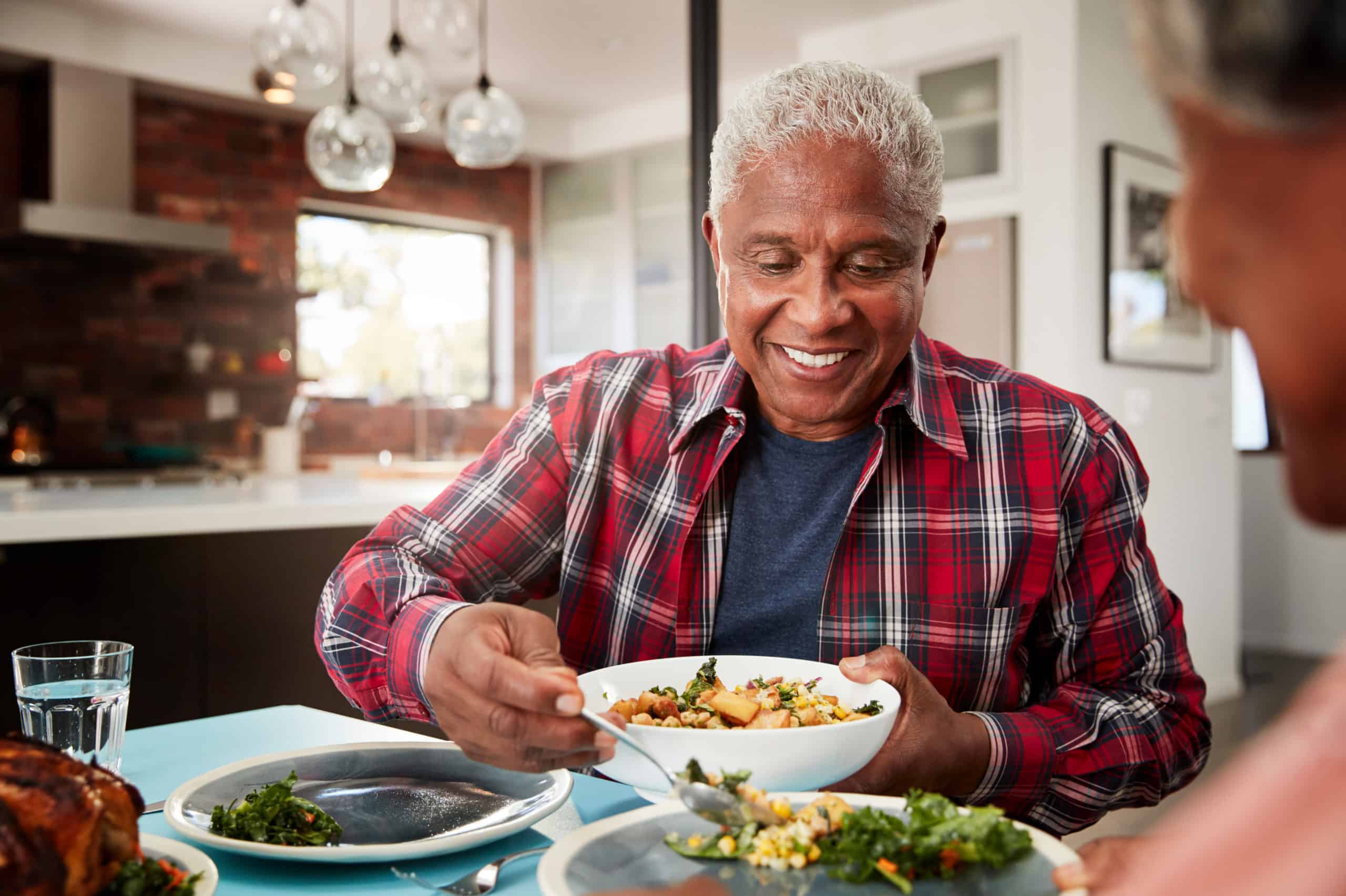Maybe you’re trying to reduce your carbon footprint. Or maybe you’re trying to lose weight or lower your cholesterol.
Whatever the reason, you’ve decided you want to go vegan—and you have a few questions.
What can you eat on a vegan diet? What are the advantages? Is it healthier to be vegan?
We’re here to help.
We talked to Noom Coach Manager JL Fields, a 12-year vegan, national board-certified health and wellness coach, and author of eight vegan cookbooks, to get the answers.
This is Chapter 1 of Noom's Guide to the Vegan Diet:
- Empowering Your Wellness Journey: Exciting Updates to Noom
- The Noom Kitchen Cookbook: Healthy Living Secrets
- What is a vegan diet? A detailed beginner’s guide
- Losing weight on a vegan diet: Here’s what you need to know
- 55 intensely satisfying vegan recipes for weight loss
- The keto vegan: What to eat, food list, and more
- 30 delicious keto vegan recipes
- Does Noom work for vegans, vegetarians, and plant-based diets?
What is a vegan diet?
A vegan diet is one that excludes meat, dairy, and all other foods that are derived from animals.
According to a 2018 Gallup poll, about 3% of Americans identify as vegan (5% say they are vegetarian—which means they may consume dairy or other animal products, but not meat, poultry, fish, or seafood).
The term “vegan” was coined in 1944 and the vegan ethic defined as “a way of living which seeks to exclude, as far as is possible and practicable, all forms of exploitation of, and cruelty to, animals for food, clothing, or any other purpose.”
Benefits of a vegan diet
If you told a friend you were going vegan 30 years ago, they might look at you like you had grown a second head.
But today, lots of people follow vegan or vegetarian diets because it offers so many advantages.
“People come into a plant-based or vegan lifestyle because of one of three pillars,” said Fields. Those pillars are good health, environmental sustainability, and ethical concerns.
It reduces your risk of chronic disease
Eating a plant-based diet comes with many health benefits.
A vegan diet that is high in nutrients and low in saturated fats can help reduce your risk of heart disease, type 2 diabetes, and certain cancers and aid with weight loss.
“Doctors will tell patients, ‘Hey, your cholesterol is high. I can write you a prescription for a statin, or you can try a plant-based diet for a while and see what happens,’” said Fields.
It’s better for the environment
Cheeseburgers are delicious, but, unfortunately, they’re not the most environmentally-friendly food.
Animal agriculture is responsible for 14.5% of greenhouse gas emissions, one of the most significant contributors to climate change.
It’s also a leading cause of deforestation, which destroys animal habitats and releases stored carbon into the atmosphere, worsening the climate crisis.
Switch to a vegan diet, and you’ll minimize your carbon footprint—a benefit that appeals to many young eaters.
It’s more humane
Lots of people follow a vegan diet out of concern for the treatment of animals or because they don’t want to consume animals or animal products at all.
“Many vegans, including me, chose this way of life for this simple reason: Why harm another being when we don’t have to?” Fields writes in her book, Vegan Meal Prep.
Veganism also combats world hunger and promotes social justice. Land that’s currently used to feed animals could instead be used to grow nutritious food for people.
Drawbacks of a vegan diet
Eating a nutritious, whole-food vegan diet isn’t always easy—sometimes, it’s tricky to avoid all animal products.
And if you’re not eating a balanced diet, you could put your health at risk.
But with a little planning and preparation, you can stay both healthy and satisfied while eating vegan.
You’re more prone to some nutrient deficiencies
Nope, we’re not talking about protein.
“A running joke in the vegan world is: but where do you get your protein?” said Fields. “We’re a protein-obsessed society, but there aren’t a lot of people walking around with protein deficiencies.”
Many plant-based foods—like tofu, seitan, beans, and oats—are high in protein. But a vegan diet can lead to a Vitamin B12 deficiency.
B12 is important for healthy blood and nerve cells, but it isn’t naturally found in plant-based foods. As a vegan, you can get enough through fortified foods (like plant milks and nutritional yeast) or supplements.
When you’re starting a new diet—vegan or not—it’s also important to recognize that everyone’s needs are different.
“If you’re deciding to make a drastic change with your diet, always consult with your healthcare provider,” said Fields.
Fields suggests you might even ask your healthcare provider for some baseline bloodwork to check for nutrients you may be lacking, such as B12, iron, calcium, and Vitamin D.
You’ll have fewer options at restaurants
There are more vegan alternatives at restaurants than ever before. There are even entire vegan restaurants now!
But at most establishments, non-vegan is still the default. If you’re following a vegan diet, you might need to do some research before agreeing on a dinner spot.
Many restaurant menus are available online, so you can look ahead of time to be sure they have vegan options.
If you can’t find a menu online or don’t see a plant-based option, you can always call and ask if they could whip up a vegan dish (many chefs are happy to do so!).
What to eat: a list of vegan diet foods
Thankfully, a vegan diet doesn’t mean a life of raw carrots and sprouted wheat. Today, you can find vegan substitutes for meat, cheese, and even ice cream at your local supermarket.
But while these innovations are exciting, vegans (just like any other eater) need to focus on whole foods—not processed ones—to stay healthy.
Fields recommends focusing on these nutritious foods, which she calls the “Fab 5 vegan food groups.”
Vegetables
Vegetables are the foundation of a healthy vegan diet. They’re packed with fiber and other nutrients (while being low in calories) and can be used in a variety of ways.
Look beyond the basics like broccoli, cauliflower, potatoes, cabbage, and kale, and you’ll find a wide range of flavors and textures to try, like:
- Artichoke
- Daikon
- Mushrooms
- Romanesco broccoli
- Arugula
- Eggplant
- Taro root
- Rutabaga
- Delicata squash
- Bitter melon
Fruit
Fruit is naturally high in fiber and antioxidants and low in fat—and, of course, it’s sweet and delicious, thanks to its fructose (fruit sugar).
Some of the most nutrient-dense fruits are:
- Apples
- Bananas
- Oranges (and other citrus)
- Berries
- Cherries
- Pineapple
- Watermelon
- Grapes
- Pomegranate
- Lychee
Beans and legumes
They may not sound exciting, but there are plenty of mouthwatering ways to use beans and legumes.
Think creamy lentil curries, BBQ black bean burgers, and peanut sauce stir-fry (is your stomach growling, too?).
Beans and legumes also have essential amino acids that make them a good source of protein for vegans. Popular beans include:
- Soybeans (and soybean products like tofu and tempeh)
- Lentils
- Black beans
- Pinto beans
- White beans
- Fava beans
- Chickpeas
- Green peas
- Peanuts
- Black-eyed peas
Whole grains
Whole (unrefined) grains are a great source of fiber. They help with digestion, keep your blood sugar steady, and can improve your cholesterol levels.
Whole grains are things like:
- Brown rice
- Bulgur (cracked wheat)
- Millet
- Buckwheat
- Quinoa
- Oatmeal
- Barley
- Corn
- Sorghum
- Whole-wheat bread and pasta
Nuts and seeds
Good news for peanut butter lovers—nuts and seeds are a key vegan food group.
Nuts (and nut butters) and seeds are a good source of protein and healthy fats, which may help improve heart health. They’re also nice and filling, so they’re a great topping for oatmeal or salad and a wonderful sandwich filling.
Healthy nuts and seeds include:
- Almonds
- Brazil nuts
- Cashews
- Macadamias
- Walnuts
- Pumpkin seeds
- Flax seeds
- Sesame seeds
- Sunflower seeds
- Chia seeds
What you can’t eat on a vegan diet
If you’re following a strictly vegan diet, you’ll need to cut out all animal products:
- Meat and seafood
- Eggs
- Dairy products (like milk and cheese)
- Butter
- Other dairy ingredients (like whey, casein, and lactose)
- Honey
- Gelatin
- Omega-3 fatty acids that are derived from fish
- Certain additives and food dyes
How to start a vegan diet: 3 tips for success
There’s no perfect route to going vegan that works for everyone. Going “cold turkey” on animal products might work for some, while a gradual transition may be more doable for others.
Fields recommends taking it one step at a time.
Note: Consult with your healthcare provider before making dietary changes.
1. Start with small, sustainable changes
A mistake we all tend to make when taking on a new challenge is jumping in too quickly—and when we’re not perfect right away, we feel like a failure.
“Instead, say here’s where I am today, and I’d like to start to move toward this way of doing things,” said Fields. “What’s one small thing that I can do right now?”
For example, you can start by eating one vegan meal per day until it becomes a habit—just like brushing and flossing your teeth—and gradually build on your successes by making more food swaps.
Or try a Meatless Monday, where you start by cutting out all animal products just one day a week.
2. Stock and prepare vegan staples
As with any diet change, preparation is important. Once you set a goal to eat vegan, make a plan for how you’re going to do it.
For example, if you tend to feel rushed in the mornings, you can prep your breakfasts the night before.
Fields also suggests keeping your kitchen stocked with fresh, frozen, and shelf-stable vegan recipe staples, such as:
Vegetables: Carrots, celery, collard greens, mushrooms, onions, russet potatoes, and sweet potatoes
Proteins: Beans (black, pinto, chickpea, etc.), lentils, tempeh, tofu, non-dairy milk, and lentils
Whole grains: Brown rice, pasta, oats, farro, and whole-wheat tortillas
Fruit: Bananas, berries, and dried fruit
Fats: Almonds, cashews, olive oil, nonstick cooking spray, seeds, and vegan butter
Flavorings: Balsamic vinegar, lemon juice, minced garlic, soy sauce, vegan Worcestershire sauce, and dried herbs and spices like basil, oregano, cinnamon, cumin, curry powder, and chili powder
When you have a plan—and a few staples on hand—you’re less likely to find yourself in a pinch and choose processed foods.
3. Value progress over perfection
Going vegan is like establishing any other habit. It just takes practice and commitment.
And if you mindlessly grab a piece of gouda from the snack table, nothing is ruined.
“We’re not perfect,” said Fields.
Just remind yourself why you’ve decided to follow a vegan diet—whether it’s for your health, your conscience, or the environment—and keep going.
If you’re eating more plant foods and fewer animal products than you were a week, a month, or a year ago, you’re on the right track.
And don’t forget to treat yourself now and then.
Give yourself permission to occasionally order that juicy veggie burger or gooey chocolate chip cookie (yep, you can make those vegan), and you’ll be more likely to stick with it.
Can a vegan diet help with weight loss?
It can! Studies suggest that a healthy vegan diet can help with weight loss—especially when you focus on nutritious whole foods over processed foods.
Are you thinking about trying a vegan diet for weight loss? Check out our blog post, Weight loss on a vegan diet: Here’s what you need to know, for six essential tips.



